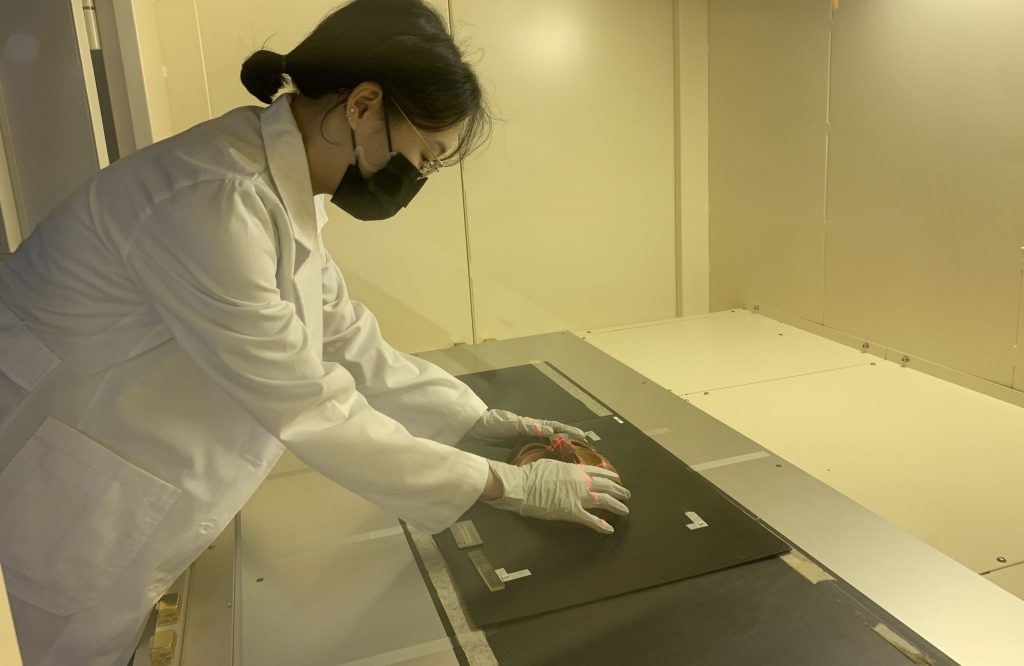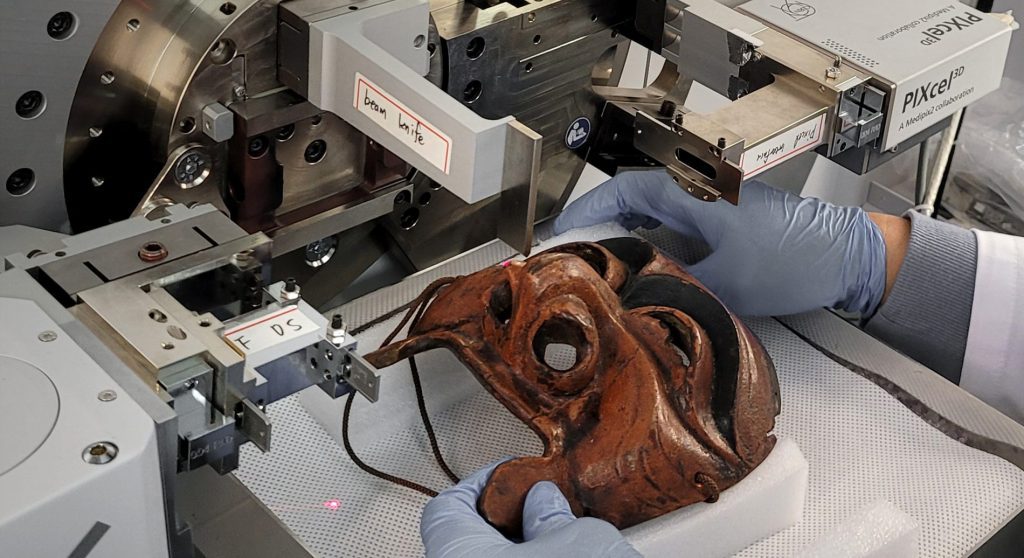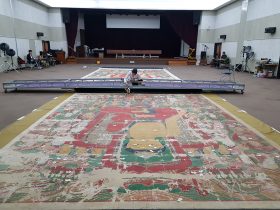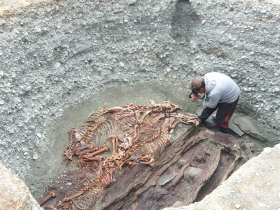Cultural Heritage Conservation Science Center
SONG Jiae
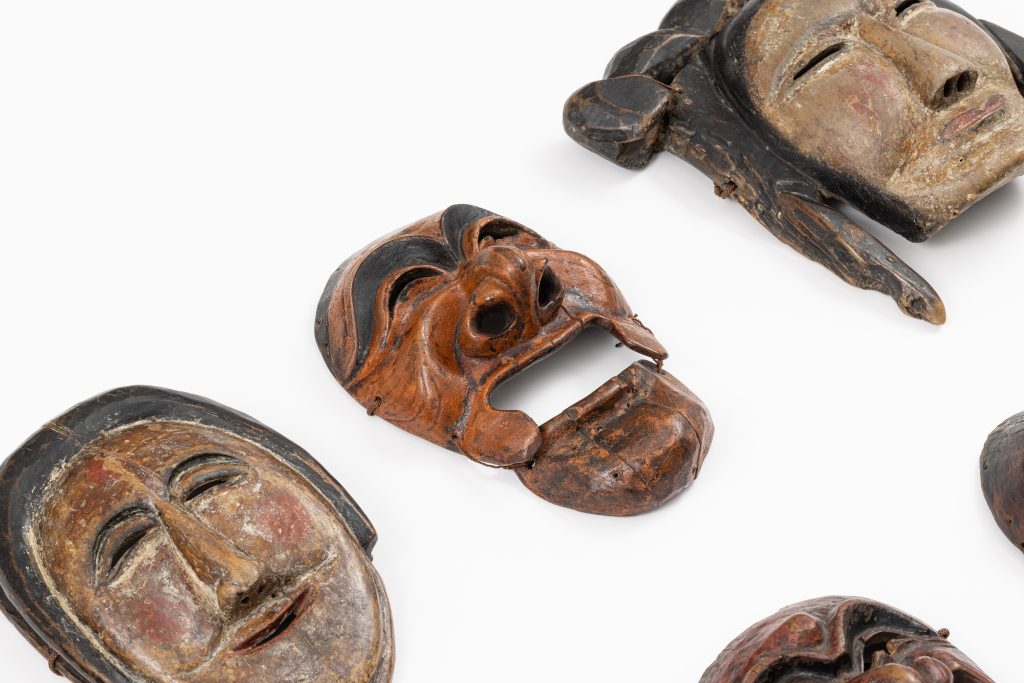

1. Introduction to Hahoe Masks and Byeongsan Masks of Andong, National Treasure
Hahoe Masks and Byeongsan Masks of Andong, designated as National Treasure of Korea, are wooden masks handed down in Hahoe and Byeongsan Villages in Andong. Dating back to the Koryeo
period, the masks are the oldest existing stage play masks in Korea and recognized around the world for their exquisite production technique and detailed expressions.
Korean masks are typically made of paper-mache or gourd and are burnt after the mask play, Talnori performance. However, Hahoe Masks and Byeongsan Masks are rare examples of wooden masks and each village preserved their masks that were used for Byeolsingut (a village ritual held to pray for peace of the village and good crops) on the first full moon of the year, which falls on January 15 of the lunar calendar.
A total of 13 pieces of Masks are designated as National Treasure – 11 Hahoe Masks and 2 Byeongsan Masks. Some masks among Hahoe Masks such as the Nobleman have chins carved on a separate piece of wood and attached to the face with a string, so they create a livelier look as if the character is moving their mouth when speaking. On the other hand, Byeongsan Masks are larger and heavier without chins.
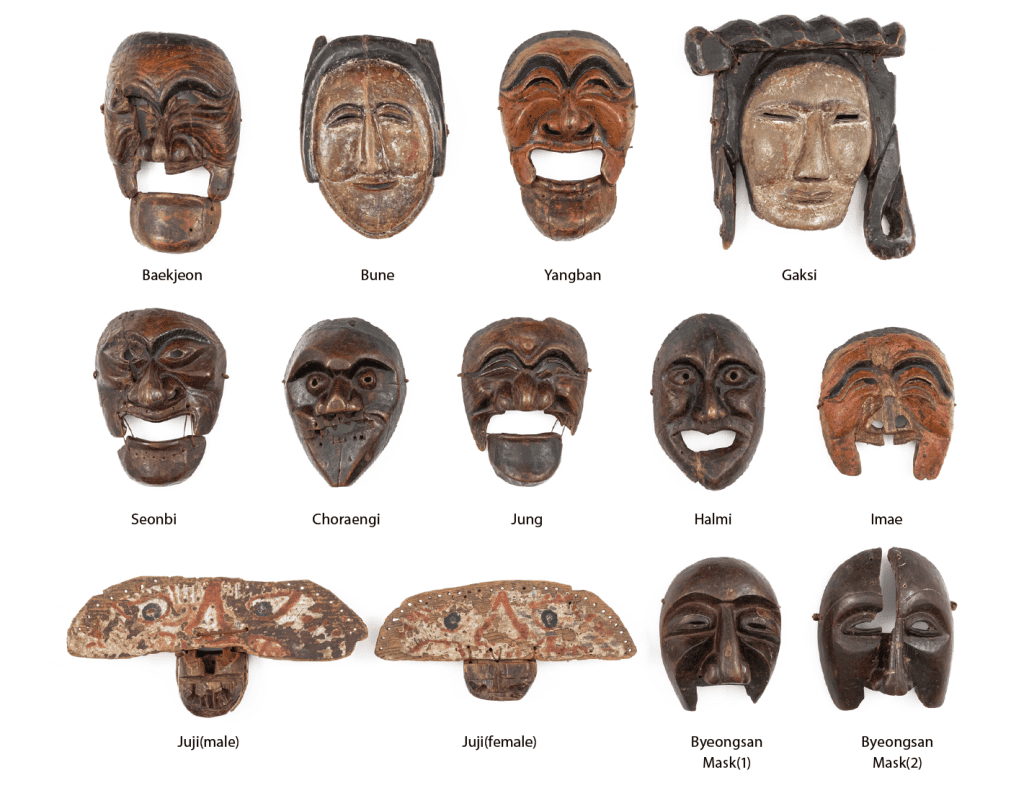

2. Non-Destructive Testing Through Science and Technology
Those Masks did not go through detailed scientific surveys or conservation treatment after being designated as National Treasure. A regular checkup on state-designated cultural property in 2020 revealed that some of the masks were in need of conservation treatment and the Cultural Heritage Conservation Science Center has been carrying out the project since 2021.
The Center is conducting the current status of the masks and the condition survey before the conservation treatment to collect information on mask making techniques. The condition survey is divided into two parts-a survey on the status of the artifact including taking photographs, taking measurements of dimensions and weight, mapping the deterioration, and then a precise documentation through non-destructive analysis. The precise documentation consists of examination of internal structure, analysis of material, observation of invisible underdrawings and traces of repair and 3D Scanning.
The X-ray testing and Computed Tomography (CT) identified that woods were cut in axial direction to carve the mask (Figure 3) and colored on a foundational layer. For the Gaksi Mask, metallic materials were used for the joint (Figure 4) and repaired parts through UV survey were found.
Pigment analysis using portable XRF (X-ray fluorescence) and XRD (X-ray diffraction) identified that the vermillion color used for the Yangban Mask is from Lead Red (Pb3O4), while the white color used for the Gaksi and Bune Masks is from Lead White (2PbCO3·Pb(OH)2), and Cinnabar (HgS) is confirmed on the red rouge on cheeks and forehead.


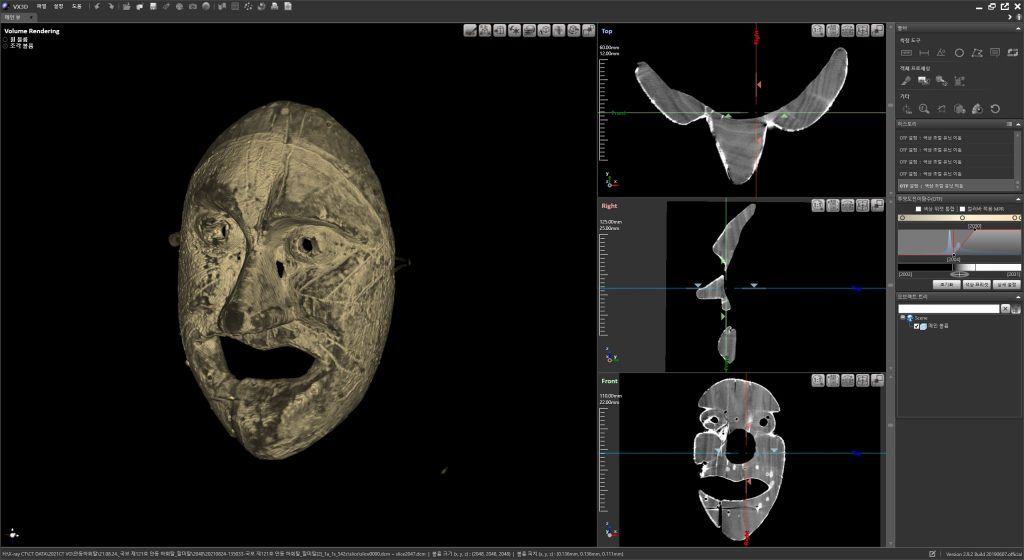



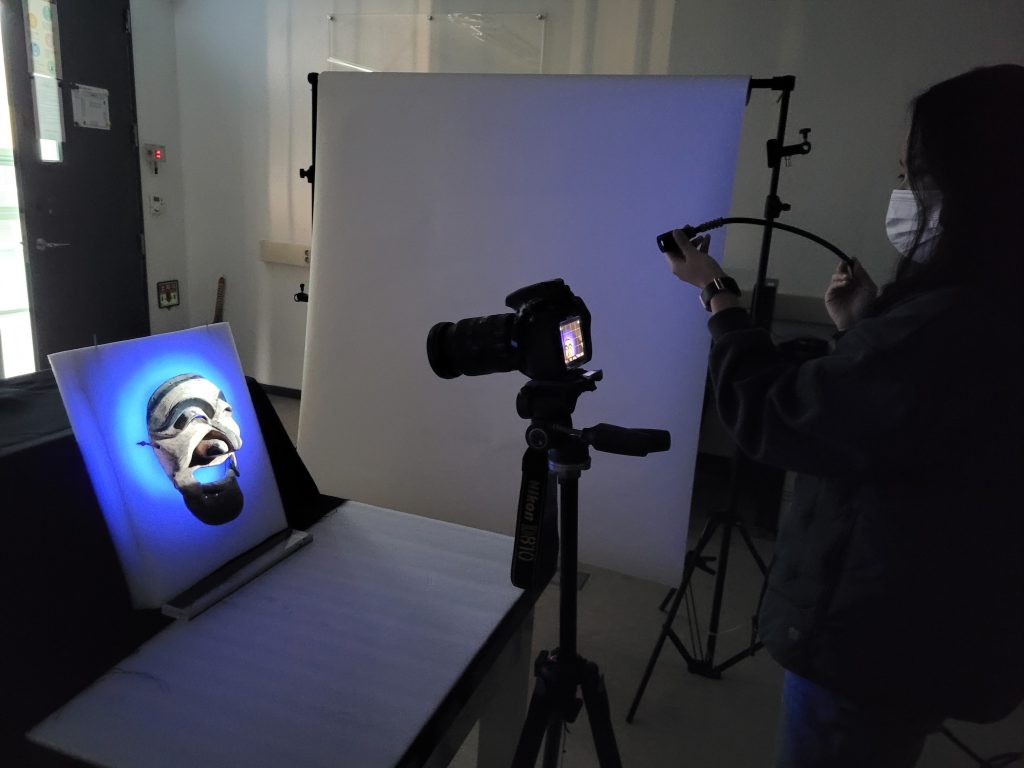



3D scanning provides precise deterioration map and measurement data of those Masks. Studies will also be conducted to find ways of merging the digital data such as X-ray CT and 3D scanning results.
As such, the range of non-destructive investigation using scientific equipment has increased the scope of the condition survey conducted prior to the conservation treatment. After conservation treatment measures are devised based on the collected data, the actual conservation treatment on the Hahoe Masks and Byeongsan Masks of Andong will begin in March 2022 and is expected to be completed by December 2022.
